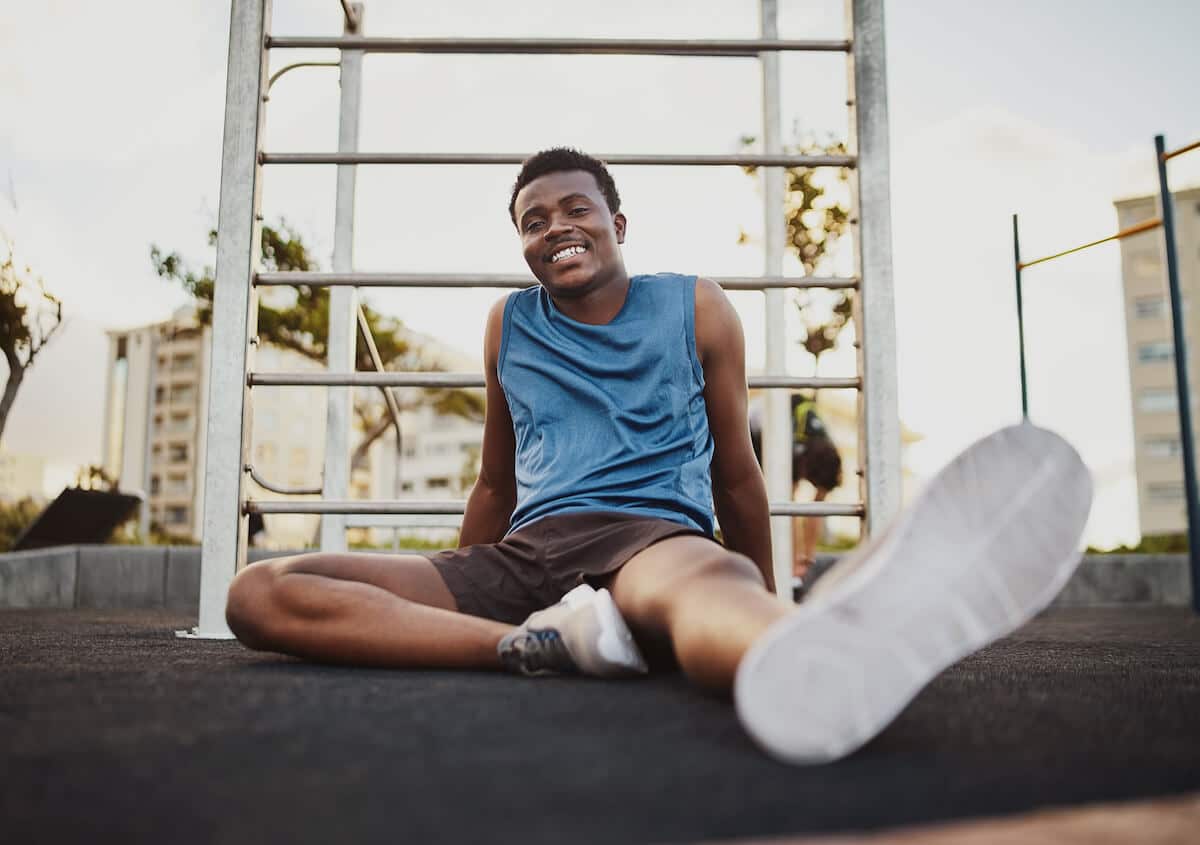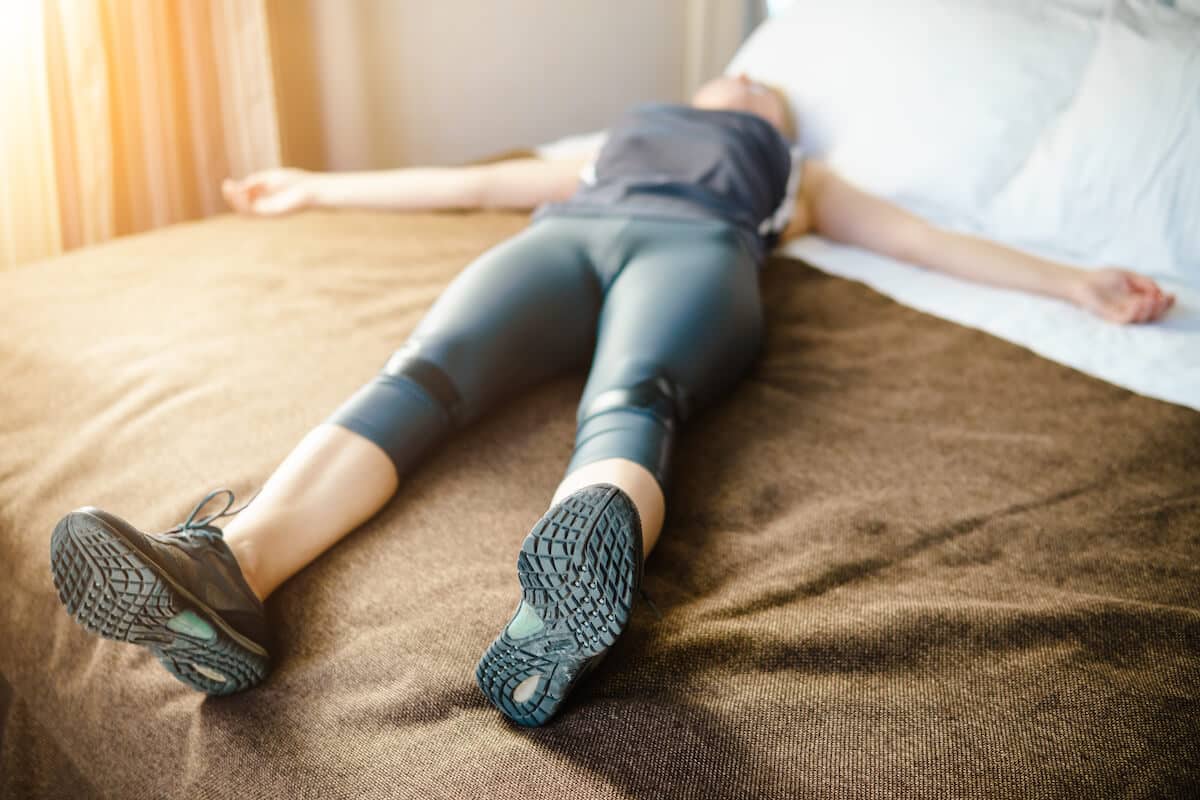
05 Sep 13 Easy Muscle Recovery Tips to Get More From Your Workouts
Strenuous exercise creates microscopic tears in your muscles, and your muscles become stronger and larger as these tears heal. But if you don’t allow enough time for muscle recovery, your muscles won’t be able to repair. This can lead to a lack of energy, increased risk of injury, and overtraining syndrome.
This guide features 13 tips to improve muscle recovery so you can get the most from every workout. Keep reading to learn what you can do before and after you exercise to help your muscles, tendons, ligaments, and energy stores recuperate during the recovery process.
Pre-Workout Muscle Recovery Tips

How you prepare before you hit the gym impacts how well your body recovers from a tough workout. If you exercise regularly, you owe it to your body and yourself to help support muscle recovery through healthy habits surrounding your routines.
1. Follow a Healthy Sleep Schedule
Sleep is vital for every process in your body, and it’s when the bulk of your muscle recovery takes place. Your body makes growth hormones while you sleep, and these hormones are essential for muscle growth and tissue repair.
Make sure you get a good night’s sleep before and after every workout by following a healthy sleep schedule. Aim for 7-9 hours of sleep every night. You can find the right amount of sleep based on what helps you feel rested and alert when you wake up.
2. Warm Up Before You Exercise
Warming up before a workout helps reduce soreness and your risk of injury. It’s important to get your heart rate up and increase blood flow throughout your body. Focus on the muscle groups you’ll be training during your workout, and don’t forget to include some full-body exercises.
Here are some warm-up ideas:
- Jumping jacks
- Skipping rope
- Easy elliptical machine workout
- Brisk walking
- Light jogging
- Swimming
- Cycling
- Burpees
- Easy bodyweight exercises
- Light stretching (save deep stretches for after your workout, when your muscles are warmed up)
Aim to warm up for 5-10 minutes before each workout. Warm-up activities should be relatively easy but challenging enough to increase your heart rate.
3. Take a Pre-Workout Supplement
Pre-workout supplements and protein powders are common go-to meals to increase recovery after a workout. Of course, you can opt for homemade pre-workout meals in addition to or instead of supplements, but shakes and powders are often more convenient when you’re on the go. Here are some excellent options:
- Pre-workouts: Pre-workout supplements contain ingredients designed to enhance energy levels, performance, and muscle recovery.
- Protein powders: Help provide your body with quality protein from protein powders that break down into amino acids through protein synthesis during the recovery process.
- BCAAs: Branched-chain amino acids (BCAAs) include a group of three essential amino acids that specifically maintain muscle growth. Taking BCAAs before a workout reduces muscle soreness and improves recovery.
Experiment with different pre-workout options to find one (or a combination) that works best for you. Pay attention to your energy levels during and after your workout and your post-workout muscle soreness to get an idea of how effective the option is for the recovery process.
4. Plan Active Rest Days to Prevent Overtraining
Overtraining can kill your gains, so plan active rest days to make time for recovery. It takes time to heal the muscle damage created during a difficult workout, which means that rest days are just as critical as training days to reach your fitness goals.
Signs of overtraining may include:
- Elevated resting heart rate
- Elevated blood pressure
- Reduced body weight
- Reduced appetite or loss of appetite
- Nausea
- Disrupted sleep and difficulty staying asleep
- Muscle soreness
- Irritability and reduced motivation
- Decreased athletic performance over 10 days
Plan a training program that gives you 1-3 active rest days per week. Do light activities to keep your body moving on your rest days, but don’t turn them into training sessions. Walking, hiking, casual sports/games (basketball, tennis, etc.), dancing, easy yoga, and relaxed cycling are ideal rest-day activities.
Also, try to give each muscle group two days between training sessions. So, if you train your chest on Monday, don’t train it again until Thursday. This lets your muscles rest even on the days that you’re training.
5. Avoid Alcohol, Tobacco, and Processed Sugar
You probably know that alcohol, tobacco, and processed sugar aren’t good for your body (save for the occasional glass of red wine). But did you know that these addictive substances also hinder muscle recovery?
- Alcohol: Drinking alcohol impairs muscle protein synthesis and your muscle’s ability to replenish its glycogen stores (i.e., energy stores) after a workout.
- Tobacco: Smoking tobacco is associated with an increased risk of injury in addition to the increased risk of cancer.
- Processed sugar: Eating processed sugar can increase your body’s inflammatory response and impair muscle signaling. It may also interfere with your exercise and aerobic capacity, making your workouts more difficult and less rewarding.
Improved muscle recovery is one of many benefits of avoiding alcohol, tobacco, and processed sugar in your diet and life. Other benefits might include increased energy, weight loss, and improved mood and sleep quality.
Post-Workout Muscle Recovery Tips

Post-workout recovery focuses on giving your muscles what they need to heal and grow stronger. These post-exercise habits can also help your body prepare for your next intense workout.
1. Do a Cool-Down Routine
Just like warm-ups, cool-downs are important to the recovery process. Cooling down after your workout helps reduce your heart rate, remove waste products like lactic acid from your muscles, and improve your performance during your next training session.
Walking and stretching are two of the best ways to cool down after a training session. Other options include gentle cycling, yoga, and easy bodyweight exercises. Try to spend 5-10 minutes cooling down after you exercise.
2. Empty Your Water Bottle
Hydration is essential before, during, and after your workout and helps accelerate muscle recovery. Higher quality water — mineral water, for example — may be more beneficial for recovery. In addition, drinking water after your workout will help replace fluids lost through perspiration.
If you’re exercising at a high intensity for more than one hour, especially if you’re sweating heavily, you’ll also want to replace lost electrolytes. Sports drinks, coconut water, or water mixed with lemon juice and a pinch of salt are all great ways to replenish electrolytes, but you can also have a banana or some strawberries with a glass of water.
3. Refuel With Food
Your body needs to refuel after a challenging workout, ideally with carbohydrates and protein from a high-quality meal or supplement. High-protein, low-carb meals with healthy fats are often best:
- Carbohydrates: Carbs help replenish energy, or glycogen, stored in your body as glucose. Brown rice, sweet potatoes, and oats are common whole food sources of quality carbohydrates.
- Protein: Whether from food or supplements, protein helps with muscle repair following a demanding workout. Meat, poultry, seafood, eggs, cottage cheese, and other dairy products are typical animal-derived whole-food sources of protein. Plant-based sources include options like tofu, soy, tempeh, chia seeds, mycoprotein (Quorn), hempseed, and nutritional yeast.
Opt for whole foods whenever possible if you have time (and the appetite) for a healthy meal after your workout. And if you need to save time, consider preparing your meals ahead of time.
4. Maintain Your Body With Supplements

No time to cook a meal after your workout? High-quality post-workout supplements are an excellent alternative. Supplements designed to support muscle recovery reduce muscle soreness and build muscle tissue. Here are some to try:
- Meal replacements: You get more than protein from meal replacements — they deliver high-quality carbs, fats, and proteins to nourish your body when there’s no time for a meal.
- Whey protein: A dairy protein that contains high levels of BCAAs, whey aids muscle recovery after a workout and helps you feel full longer.
- Creatine: An amino acid, creatine isn’t a complete protein, but it helps increase muscle and replace creatine stores that your body uses during your workout.
- Pea protein: Pea protein powder is a plant-based alternative to whey protein, and it’s ideal for those who avoid animal products.
Post-workout supplements can improve recovery time, reduce sore muscles the next day, and help you reach weight training or endurance goals.
5. Take Anti-Inflammatory Pain Killers
Ibuprofen and other NSAIDs (non-steroidal anti-inflammatory drugs) are a safe way to alleviate some of the pain during muscle recovery. Just ensure you’re staying hydrated and not taking them every day. NSAIDs can strain your kidneys, and prolonged use coupled with dehydration can lead to kidney damage.
6. Rest, Relax, and Recover
Time is one of the best ways to support muscle recovery. Rest days assist athletes across the board, whether you’re doing weight lifting, high-intensity interval training, bodyweight workouts, or resistance training with bands.
It might sound counterintuitive, but active recovery days work particularly well for muscle recovery. Try light physical activities like walking, hiking, yoga, swimming, foam rolling, and stretching. Foam rollers can also help reduce delayed onset muscle soreness (DOMs) in the days following a challenging workout.
7. Take Contrast Showers
Hot/cold showers, also known as contrast showers, can help reduce muscle soreness, alleviate fatigue, and remove excess lactic acid from your muscles after a workout. Contrast showers involve switching between hot water and cold water as you shower. For example, you might switch to 30 seconds of cold water after every two minutes of hot water.
Consult your doctor or a qualified sports medicine professional before taking contrast showers. This is especially important if you suffer from high blood pressure, heart conditions, deep vein thrombosis, or other serious medical conditions.
8. Reduce Stress With Massage

Did you know that chronic stress impairs muscle recovery? If you exercise regularly, you can support your gains by lowering your day-to-day stress levels. You can start doing this with massage, which can reduce stress while helping to alleviate muscle soreness by increasing blood flow to the area.
You don’t have to pay for a massage to reap these benefits. Massaging yourself helps relieve stress and increase blood flow, too. And if you’re not comfortable using your hands, try using a foam roller or tennis ball instead.
Support Muscle Recovery Before and After Every Workout
You can transform your workout and get better results by implementing some or all of these muscle-recovery tips into your workout routine. And if you’re looking for supplements to help with muscle repair, look for Ingredient-Optimized products to ensure you’re getting your money’s worth. Ingredient Optimized products are designed for high bioavailability, so your body can get more protein from every serving.
Here are some products we recommend:
- Meal replacement: Clean Meal by Kaged Muscle
- Whey protein: ioWHEY Protein by Performix
- Plant-based protein: The ioPEA by MyProtein


